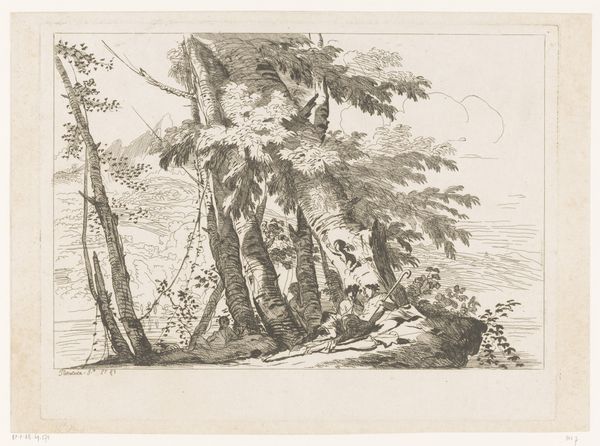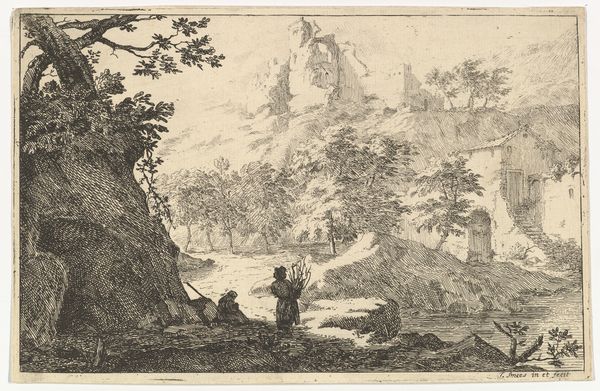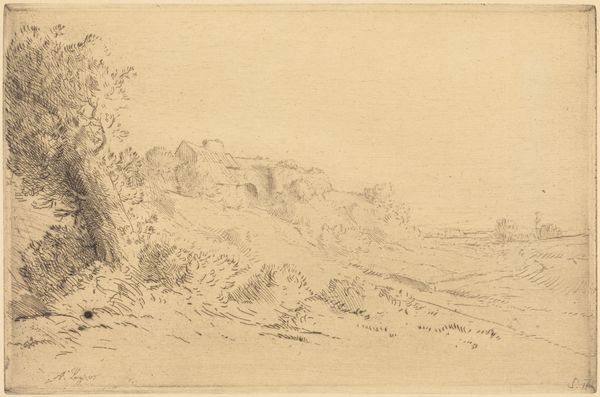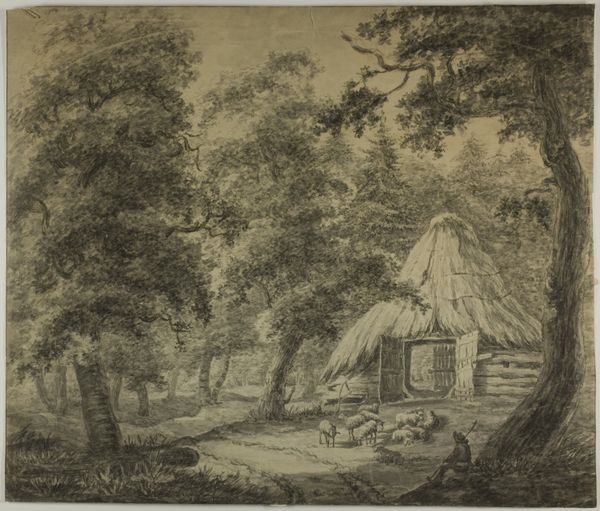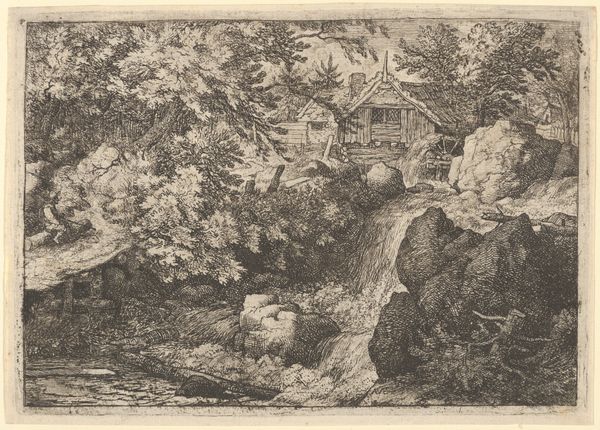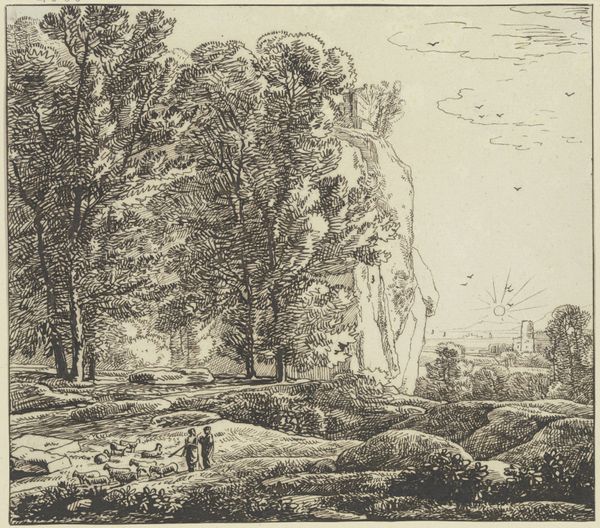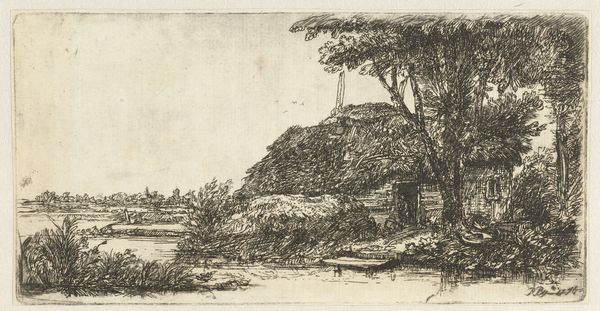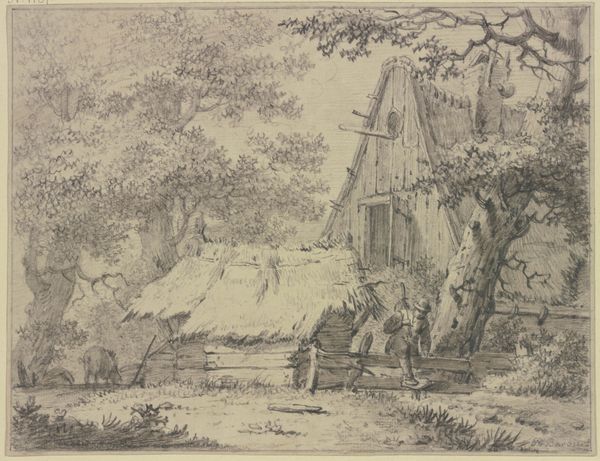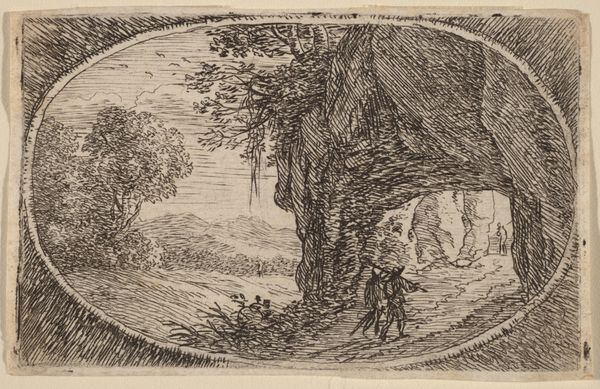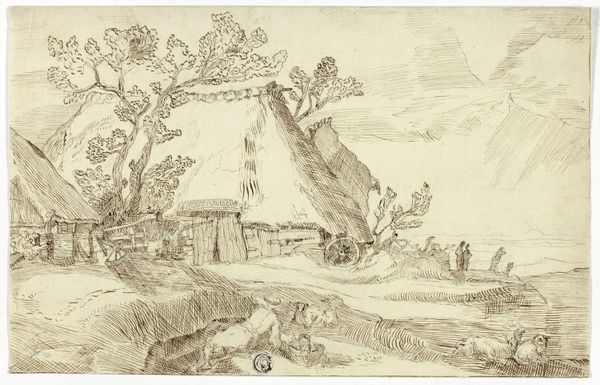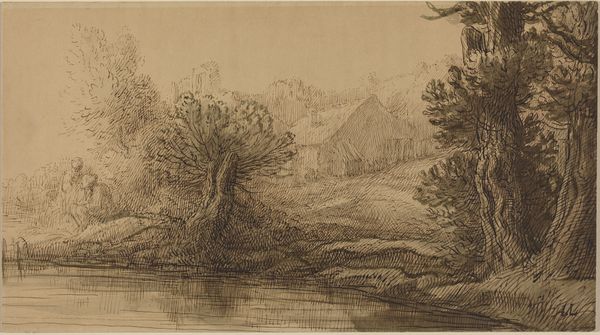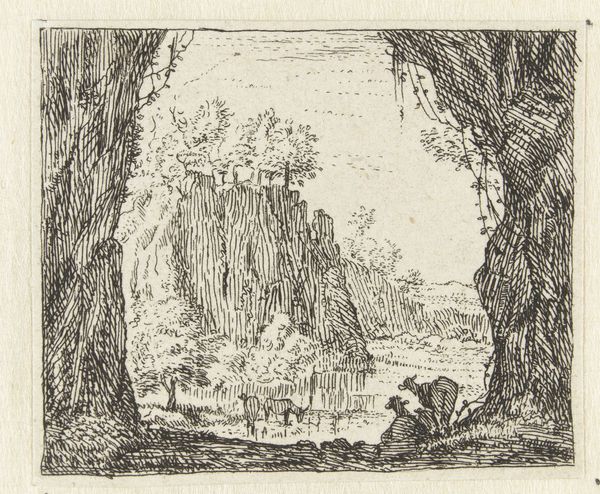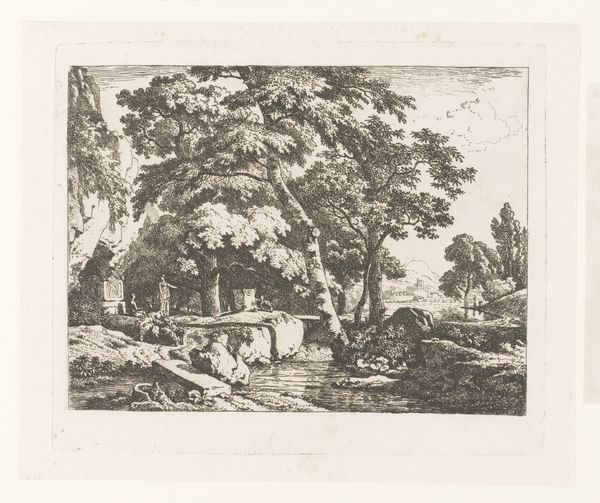
Dimensions: overall: 23.6 x 34.3 cm (9 5/16 x 13 1/2 in.)
Copyright: National Gallery of Art: CC0 1.0
Curator: This etching from 1761, titled "A Rustic Kiln at Vernon," is by Johann Georg Wille. Editor: My initial impression is that there's a real contrast here between the rough, decaying structure of the kiln and the tranquility of the scene around it. Curator: Indeed. Wille, known for his detailed engravings, offers us a glimpse into rural life and labor in 18th-century France. I’m intrigued by the kiln's construction. We can clearly see the different materials—stone, wood, thatch—and the way they've been assembled. There is evidence of resourcefulness and perhaps even poverty as everything has been repurposed and cobbled together. Editor: From a historical perspective, it raises questions about the social and economic realities of rural communities at that time. Who used this kiln? What was being fired within? The setting—two figures leisurely engaged at their task in the lower right foreground—contrasts sharply with the depiction of hard, physical work embodied by the ruined kiln. Was it simply a pastoral idyll? Curator: Perhaps Wille aimed to capture the symbiotic relationship between labor and leisure within this community. I’m struck by the sheer craft evident in the printmaking itself. The cross-hatching, the varied line weights. One can almost feel the textures. This makes me think about how reproductive printmaking at the time transformed and distributed imagery to a broader audience and solidified Wille's success as an artist and merchant. Editor: And thinking about distribution – where was this artwork displayed? Was it accessible to all audiences? Was it intended to invoke nostalgia or perhaps spark reflection on urban/rural divides and the realities of vernacular labor for the elite patrons viewing them? The power dynamics at play in shaping perspectives must have been substantial. Curator: Absolutely. It’s a testament to the power of material investigation that we can analyze art with sensitivity to the intersection of social and labor history, challenging notions about fine art and how value is created. Editor: Considering its original display and audiences reveals the social, political, and even economic context that elevated the landscape's imagery as a vital instrument in shaping taste. Curator: Indeed. Every etching, a captured history. Editor: Precisely. Art speaks if you listen carefully.
Comments
No comments
Be the first to comment and join the conversation on the ultimate creative platform.
